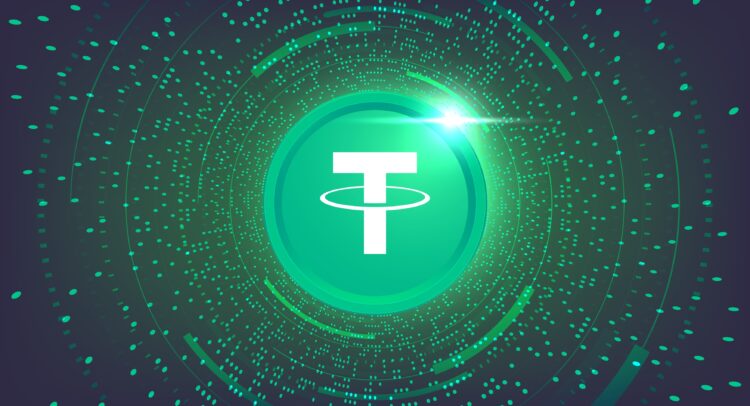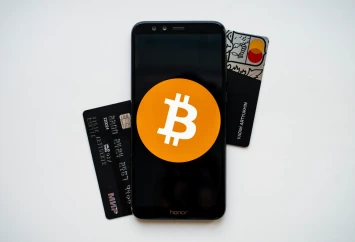In This Article
- What Are Stablecoins and Why Do They Matter?
- Tether (USDT): The Market Leader
- USD Coin (USDC): The Regulated Choice
- RLUSD: The New Contender
- USDT vs. USDC vs. RLUSD: Key Differences
- Which Stablecoin Should You Use?
- FAQs About Stablecoins
What Are Stablecoins and Why Do They Matter?
Stablecoins are cryptocurrencies designed to maintain a stable value, typically pegged to fiat currencies like the US dollar. Built on blockchain technology that secures stablecoins, they combine the speed and security of blockchain with the price stability of traditional money, making them essential for:
- Trading (avoiding crypto volatility, volatile cryptocurrencies such as Bitcoin)
- Remittances (fast, low-cost cross-border payments)
- DeFi (lending, borrowing, and yield farming)
But not all stablecoins are created equal. Some are centralized and regulated, while others are decentralized and algorithmically controlled. In this guide, we’ll compare the three major players: Tether (USDT), USD Coin (USDC), and RLUSD—a rising competitor.
Tether (USDT): The Market Leader
Who Issues USDT?
- Issuer: Tether Limited
- Launch Year: 2014
- Backing: Claims 1:1 reserves (cash, commercial paper, and other assets)
Key Features
✅ Largest stablecoin by market cap (~$110B as of 2025)
✅ Extremely liquid—used on popular cryptocurrency exchanges for trading stablecoins
✅ Fast transactions (available on multiple blockchains, including Ethereum, Tron, and Solana)
Controversies & Risks
⚠️ Lack of full audits (only publishes attestations)
⚠️ Regulatory scrutiny (past legal issues with the NY Attorney General)
⚠️ Centralized control (Tether can freeze wallets if required)
Best For: Traders who need liquidity and widespread acceptance.
USD Coin (USDC): The Regulated Choice
Who Issues USDC?
- Issuer: Circle (backed by Coinbase and BlackRock)
- Launch Year: 2018
- Backing: 100% cash and short-term U.S. Treasuries
Key Features
✅ Fully audited (monthly reports by top accounting firms)
✅ Regulator-friendly (compliant with U.S. financial laws)
✅ Quick redemptions (direct bank withdrawals)
Potential Downsides
⚠️ Centralized (Circle can freeze funds if needed)
⚠️ Lower DeFi adoption than USDT in some ecosystems
Best For: Institutions and cautious investors who prioritize transparency.
RLUSD: The New Contender
Who Issues RLUSD?
- Issuer: Ripple Labs (XRP’s parent company)
- Launch Year: 2024
- Backing: 1:1 USD reserves + blockchain-based stability mechanisms
Key Features
✅ Fast & low-cost transactions (built for Ripple’s XRP Ledger)
✅ Regulatory clarity (Ripple works closely with regulators)
✅ Growing adoption (used in Ripple’s payment solutions)
Potential Risks
⚠️ Newer, less proven than USDT and USDC
⚠️ Limited DeFi integrations (still expanding)
Best For: Those using Ripple’s ecosystem for cross-border payments.
USDT vs. USDC vs. RLUSD: Key Differences
| Feature | USDT | USDC | RLUSD |
|---|---|---|---|
| Issuer | Tether Ltd | Circle | Ripple Labs |
| Backing | Mixed reserves | Cash & Treasuries | USD + blockchain stability |
| Transparency | Moderate | High | High |
| Regulatory Status | Controversial | Compliant | Compliant |
| Speed & Fees | Varies by chain | Fast (Ethereum, Solana) | Very fast (XRP Ledger) |
| Best Use Case | Trading | Institutions | Ripple payments |
Which Stablecoin Should You Use?
- Need maximum liquidity? → USDT (best for trading)
- Want full transparency? → USDC (safest for long-term holding)
- Using Ripple’s network? → RLUSD (ideal for fast settlements)
If you’re new to crypto, check out our comprehensive guide for crypto beginners for more insights.
FAQs About Stablecoins
1. Are stablecoins really safe?
They’re generally safer than volatile cryptos, but risks depend on the issuer. USDC is the safest due to full reserves and audits.
2. Can stablecoins lose their peg?
Yes—this happened with USDT in 2018 and TerraUSD (UST) in 2022. Stick to well-backed stablecoins like USDC and RLUSD.
3. Which stablecoin is best for DeFi?
USDT and USDC dominate DeFi, but always check which one your preferred platform supports.
4. Can governments ban stablecoins?
They could regulate them (like the EU’s MiCA laws), but a full ban is unlikely for compliant ones like USDC and RLUSD.
5. How do I store stablecoins securely?
Use trusted secure wallets for storing stablecoins—hardware wallets are best for long-term storage.
Final Thoughts
Stablecoins are the backbone of crypto trading and payments, but each has trade-offs:
- USDT = Liquidity king (but less transparent)
- USDC = Safest bet (fully regulated)
- RLUSD = Fast & efficient (best for Ripple users)
Before choosing, consider your needs—whether it’s trading speed, security, or regulatory compliance. And always do your own research using reliable tools for monitoring stablecoin markets.
What’s your go-to stablecoin? Let us know in the comments!
Financial Advice Disclaimer
The information provided in this article is for educational and informational purposes only and should not be construed as financial, investment, or legal advice. Cryptocurrencies are highly volatile and speculative assets, and investing in them carries significant risks, including the potential loss of your entire investment. The content of this article does not constitute a recommendation to buy, sell, or hold any cryptocurrency or financial product.
Always conduct your own thorough research and consult with a qualified financial advisor, tax professional, or legal expert before making any investment decisions. Past performance is not indicative of future results, and the cryptocurrency market is subject to rapid changes, regulatory developments, and technological advancements that may impact the value and viability of digital assets.
The author and publisher of this article are not responsible for any financial losses, damages, or other consequences that may arise from your use of the information provided. Invest at your own risk and only with funds you can afford to lose.
Explore more crypto guides at CryptoRetail. 🚀





